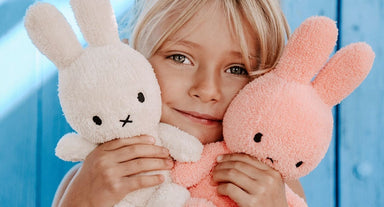Few people know that this is one of 14 fears recorded in childhood development. It is part of the normal developmental process. But, it is related to the child's ability to try in the future if we respond to it incorrectly.
Children as young as 2 years old can recognize the “consequences” of losing and visualize it as unpleasant. Children begin to develop avoidance behavior from activities if they think they have no chance of winning or have had previous experiences of losing.

What should you do when your child shows signs of fear of losing?
Fear of losing is a normal part of development, but parents' responses should be oriented toward effort rather than results. Failure is not about the result, but whether the effort in that process was achieved or not. The results of failure are not always shameful or reprehensible. Most of the results of failure are valuable because they are cumulative lessons for future success. It sounds too theoretical, but actually the application is quite simple. These are tips you can apply in your child's daily activities to build effort rather than results.

1. How to choose challenging activities. Challenging activities need to be age appropriate, and allow children to do it. This helps children enjoy the process. If it is too difficult, children will easily give up after 1-2 tries. At this time, children begin to think about the results.
2. When you challenge your child, you and your child play together. You are not responsible for doing anything for your child. You can support your child, but don't do it for them. For example, if the child wants to dress himself, let him wear the clothes and put on his own sleeves. When you need it, you ask permission like "If you need it, tell me, I can help you pull this easier."
3. Let children know that the results of games or challenges are not shameful or blameworthy. Depending on the purpose the game results bring. You should organize parent-child group games such as "swipe ink on your hands or face when you answer incorrectly". After 2-3 rounds of playing, use a mirror to show children that no one makes mistakes, everyone's face will be stained with ink, it looks really funny. This helps children realize that no one is always right or will always do wrong.
4. Effort is the most important part of a game or challenge. The result of failure after each mistake is only a part of the success that follows. Children are often afraid of making mistakes because they think they will do it wrong without realizing the value of effort is very important. The wooden stacking game is a good example for children to understand effort. You and your children compete to stack square wooden blocks high. Each time you arrange, you and the child discuss how you will arrange the wooden block so that it does not fall but increases its height. Discussion will help children understand that the process of having a tall wooden block is a real effort. Not just who is taller, who doesn't fall.
======================
At Mykingdom, each toy is carefully researched and designed to help children develop all senses, encourage children to actively play, be eager to learn and explore, always ensure absolute safety and promote Developing different aspects of children is encouraged by play, giving them a safe choice when promoting learning and development in children.
Come to your nearest Mykingdom store and visit LEGO's colorful booth! For detailed information and how to order online, you can visit Mykingdom's website at: http://www.mykingdom.com.vn




